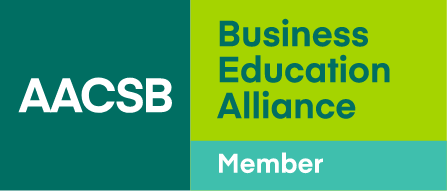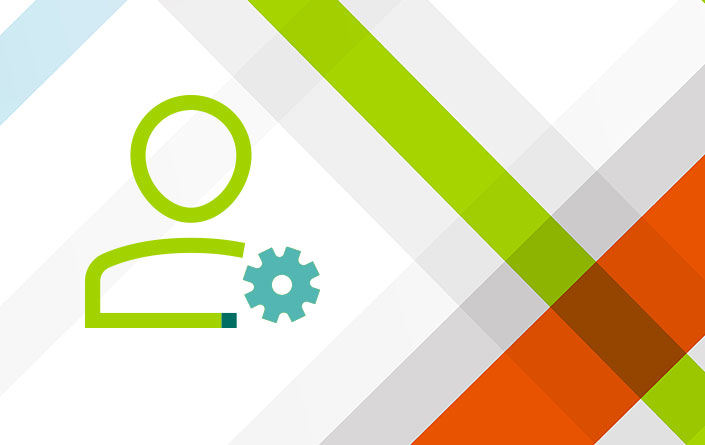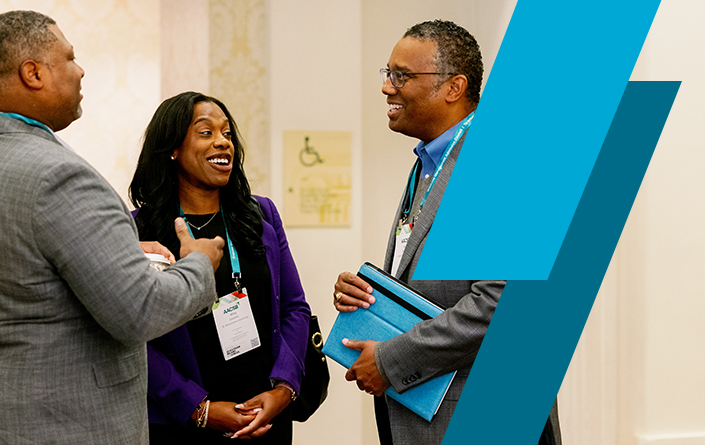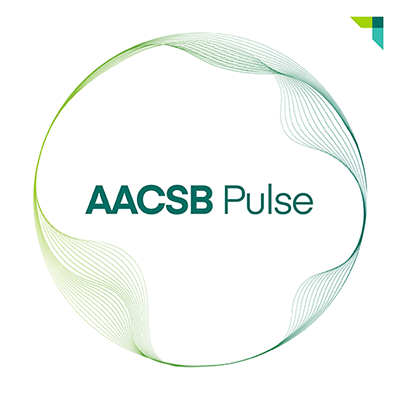AI-Driven Simulations Foster Career Readiness
- At the University of Guelph, two new simulations allow students to practice interacting with mentors and supporting their colleagues as allies in the workplace.
- Simulations are designed to foster academic integrity—each student’s interaction is different, and the use of course-trained AI reduces reliance on other external tools.
- Students who do well in the simulations are those who successfully apply content that has been covered in the classroom.
Many business school graduates enter the workforce without a clear understanding of how to manage career transitions, advocate for themselves, or build strong professional networks. When schools provide rigorous learning environments that emphasize career readiness, students develop the confidence to communicate their value, build meaningful professional relationships, and adapt to new challenges. If students learn these strategies early, they are better prepared to make informed career decisions that will lead them to long-term success.
At the University of Guelph’s Lang School of Business and Economics in Ontario, Canada, we recently began offering a course called Launching Future You—Strategies for Career Success. We made the course open to students throughout the university because we know that both business majors and students from other disciplines benefit when they work with others outside of their fields. In addition, we embrace insights from other disciplines because we know that being career-ready means mastering knowledge outside of business education.
The new course covers topics such as how to find a mentor, handle setbacks, negotiate salaries, and plan for professional growth beyond the first job. It strongly emphasizes lifelong learning and the importance of building transferable skills. In addition, the course teaches students how to deal with failure and rejection, which helps them develop the resilience they need to move forward with confidence throughout their careers.
Just as important, the new course leverages a variety of technologies—including artificial intelligence (AI)—to support students in their professional development.
Simulating the Workplace
As the designer of the course, I had to solve the challenge of providing an impactful interdisciplinary learning experience that would support a large volume of students. My response was to design two fully interactive custom simulations related to career development. These simulations, which are driven by generative AI (GenAI), were built by Ametros Learning.
In the first simulation, learners are required to engage a mentor from their fictional online workplace, Green Thumb. Within the simulation, students have conversations with their managers, send emails, and communicate with work colleagues through chat features that mimic tools such as Slack and Microsoft Teams.
In the second simulation, which focuses on inclusion, students practice allyship in the workplace. While students are again at Green Thumb, this time they are interacting with a co-worker who is facing discrimination. Students must engage with other employees and take steps that best reflect the principles of allyship.
The interactive simulations solve the challenge of providing an impactful interdisciplinary career development course that supports a large volume of students.
At the beginning of each simulation, all students receive an identical email. For instance, in the mentorship simulation, the boss sends an email that references a recent six-month performance review and suggests that the student enroll in the company’s mentorship program. He continues:
One of our senior managers, Deepti Devdhar, just joined the program as a mentor, and I think the two of you will work well together. Deepti Devdhar has been with Green Thumb Solutions for over a decade and has been instrumental in driving the firm’s most impactful sustainability projects. Her extensive experience and strategic insights have consistently led to measurable improvements in our clients’ environmental footprints. As we touched on in your review, professional communication is the area you really need to focus on if you want to advance in your role, and that just so happens to be Deepti’s specialty.
Once students begin conversing with the GenAI, their interactions quickly diverge. Each simulation forces students to think critically about how to respond to specific situations in real time using the professional tools they will also be expected to use at work, regardless of their industry.
Identifying the Benefits
We first began using these simulations in the 2025 winter semester. I have found that they offer four key advantages:
First, the simulation has been trained on specific course materials and content, which allows students to receive instant real-time feedback at the end of each interaction without having to wait for the teaching team to review everyone’s work. This format also allows students to proceed at their own pace.
Second, since the simulations rely on GenAI, they support academic integrity in the course. Each interaction is different, so the conversations, responses, and follow-up questions vary every time, which makes it difficult for students to copy from each other. In addition, students can’t ask another AI tool to answer the questions because no other tool has been trained on the course content. While an alternate chatbot might generate reasonable answers, it won’t do well on the overall assignments.
Third, students have opportunities to work with AI tools and learn how to respond to prompts in real time. Many of today’s companies are increasingly using AI during their initial interview rounds, so engaging in AI simulations helps students build career readiness skills.
In the simulations, students have opportunities to actually experience some of the challenging or uncomfortable aspects of the workplace.
Finally, students can practice relevant skills in a low-risk environment. Instead of merely drafting emails or discussing workplace conflicts, they have opportunities to actually experience some of the challenging or uncomfortable aspects of the workplace, such as asking a senior executive to be a mentor or dealing with microaggressions and discrimination. After completing the simulations, students are better prepared to transition to the workplace.
Grading the Assignments
For the most part, students have responded positively to the simulations. I have received emails from students telling me how much they enjoyed this assignment—one even called it incredibly fun. Some students shared that, prior to this course, they had never been asked to think about or apply content in such a direct fashion. They have also found it a new experience to receive instant feedback on how well they’re applying their learning.
However, not all students love the assignment or the way it is graded. Students get assessed on about five interactions with GenAI over the course of each simulation. Each interaction is graded based on certain criteria such as professionalism (how well did the student understand the client’s needs?) and empathy (did the student acknowledge co-workers’ feelings?)
The simulation provides students with instant feedback on their performance (such as, “You were right to suggest this approach in your meeting with Deepti”). The simulation also gives them numerical scores depending on how well they apply the criteria in each interaction (for instance, 1 or 2 out of 2 possible points). At the end of the simulation, students’ scores are determined by how many points they earned divided by the total possible points.
The format ensures that students must have a thorough grasp of the material—there’s no room for guesswork or vague responses to earn partial credit. I communicate this clearly in my instructions, which say, “You can have a good interaction in the simulation that scores a 0 if it does not demonstrate application of content from the course module.”
Students who have not kept up-to-date with the course are likely to struggle with the simulation. In fact, I have a slightly larger cluster of failing grades than I have on other assignments. This outcome is difficult for some students to accept, and a small number of them have pushed back on their grades.
When I review their simulations, I generally find that they do not understand the course materials. They might be having pleasant conversations with the simulation characters, but they have no understanding of the mentorship models we discussed, and they have no idea how to apply course content toward the goal of becoming an ally in the workplace.
The format of the simulation ensures that students must have a thorough grasp of the material—there’s no room for guesswork or vague responses to earn partial credit.
I have a strong belief that learners deserve the opportunity to follow up on assignments, so I outline a clear process by which students can appeal their grades. In light of the differences between simulations and standard assignments, I share a draft email students can use to question point deductions. Refining the grade appeals process in this way has helped me streamline the time I need to review appeals.
Most of the time, I do not disagree with grades determined by the simulation as I was an active participant in training the AI. When students ask me about specific criteria or interactions, I provide them with more tailored explanations about where they could improve. This has resulted in some great conversations with students about their own learning and their understanding of course content.
When I do notice discrepancies, I not only adjust the grade for the student on our learning management system, but also let the team at Ametros Learning know about the problem. They update the simulation so the discrepancy does not occur again. In this way, I ensure a fair environment for student learning.
Embracing AI With Intention
Despite the value of AI-powered simulations, the growing presence of GenAI in higher education is not without its challenges. Faculty and institutions must grapple with questions of academic integrity, data privacy, algorithmic bias, and the broader implications of using AI to simulate human interaction. These are not minor concerns, and they deserve careful, ongoing reflection as we consider how to incorporate AI responsibly into our pedagogical practices.
And yet, if business schools are to fully prepare our students for the evolving realities of the workplace, we must embrace the opportunities that AI affords. For instance, it’s essential for students to know how to communicate, solve problems, exercise professional judgment, navigate mentorship, and learn how to be workplace allies—but it’s difficult for schools to create training programs on these topics that can be implemented at scale. GenAI can enable large groups of students to develop these critical competencies in realistic, low-stakes environments.
AI isn’t a replacement for human teaching—it’s an extension of our capacity to support diverse learners in more personalized and timely ways. When implemented with thoughtful design and ethical guardrails, AI can foster deeper engagement, provide faster feedback, and inspire greater student confidence. Those are lessons we have learned here at Lang in our interdisciplinary career readiness course.
As business schools, we have a responsibility not just to respond to change, but to help shape it. That means we must explore how AI can complement—not compete with—our goals of inclusive, practical, and forward-thinking education. The future of work will require our students to collaborate with AI. It’s time we helped them learn to do so wisely.






